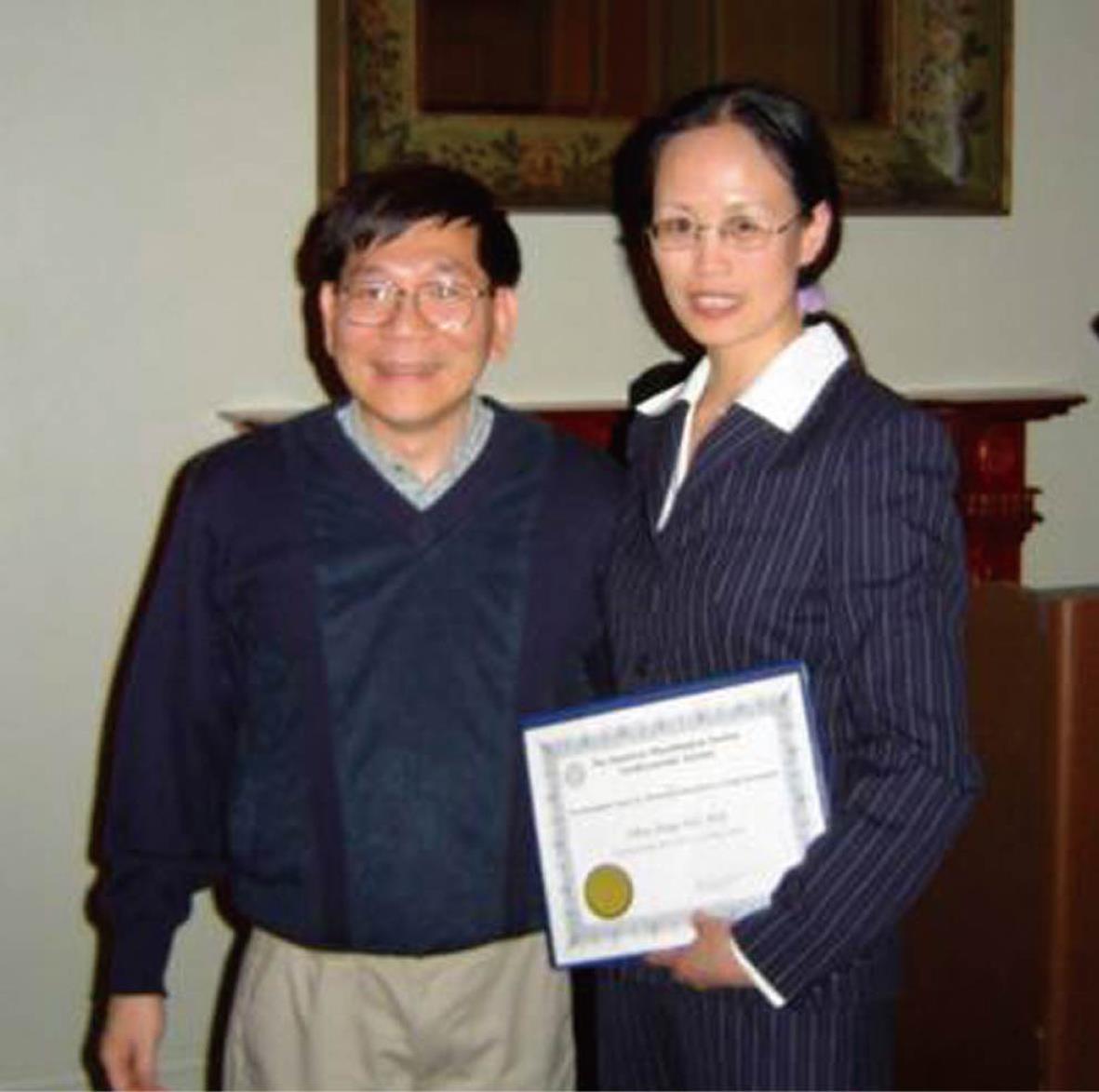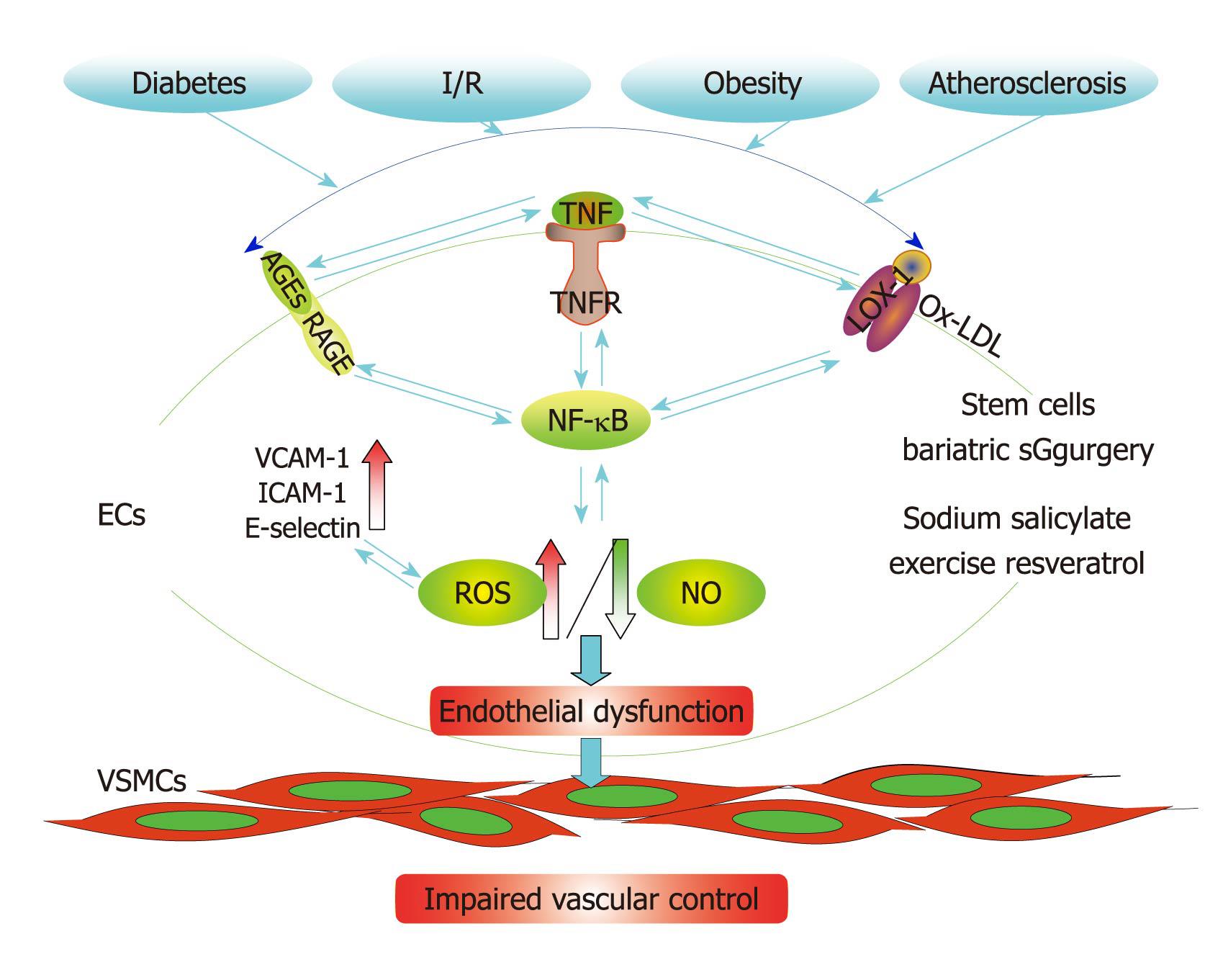Copyright
©2011 Baishideng Publishing Group Co.
Figure 1 Dr.
Cuihua Zhang and her postdoctoral mentor Dr. Lih Kuo in 2003 at an Experimental Biology meeting.
Figure 2 The team at Louisiana State University Health Sciences Center, New Orleans.
Front Row: Souad Belmadani, Cuihua Zhang, Marta Focardi, Jinjiang Peng, Xue Gao. Back Row: Eric T Guilbeau, Andrea Picchi, Xiangbin Xu
Figure 3 Cuihua Zhang, MD, PhD, FAHA, Division of Cardiovascular Medicine in the Departments of Internal Medicine, Medical Pharmacology and Physiology, Nutrition and Exercise Physiology, Dalton Cardiovascular Research Center, University of Missouri-Columbia, 134 Research Park Drive, Columbia, MO 65211, United States.
Figure 4 The magic of blood vessels in “A” shows that Mac3 positive macrophages infiltrate the adventitia of small vessels in the mesenteric adipose tissue of diabetic mice.
The magic of blood vessels in “B” shows adiponectin is co-localized with endothelial layers of a small artery in the heart tissue of mice with genetic detection of tumor necrosis factor.
Figure 5 Activation of inflammatory cytokines leads to the interaction of advanced glycosylation end product and their receptor and oxidized low-density lipoprotein/lectin-like oxidized low-density lipoprotein receptor-1, which causes progression of inflammatory disorders which initiates endothelial dysfunction and culminates in coronary microcirculation in type 2 diabetes, ischemia/reperfusion injury, obesity, and atherosclerosis.
The excessive production of tumor necrosis factor (TNF)-α has a deleterious downstream effect by augmentation of superoxide production and limiting nitric oxide (NO) bioavailability in endothelial cells, which results in reduction of NO-dependent vasodilation. My laboratory is focusing on anti-inflammatory and antioxidative stress therapeutic effects, and the roles of sodium salicylate, exercise and resveratrol in type 2 diabetes, ischemia/reperfusion (I/R) injury, obesity, and atherosclerosis. Recently, we have started looking at the effects of stem cells and bariatric surgery on vascular dysfunction in obesity and diabetes. ROS: Reactive oxygen species; NF-κB: Nuclear factor κB; Ox-LDL: Oxidized low-density lipoprotein; LOX-1: Lectin-like oxidized low-density lipoprotein receptor-1; AGEs: Advanced glycosylation end products; RAGE: Advanced glycosylation end products receptor; ECs: Endothelial cells; VSMCs: Vascular smooth muscle cells.
- Citation: Zhang C. Cardiovascular physiology at the bench for application in the clinic. World J Cardiol 2011; 3(2): 59-64
- URL: https://www.wjgnet.com/1949-8462/full/v3/i2/59.htm
- DOI: https://dx.doi.org/10.4330/wjc.v3.i2.59













